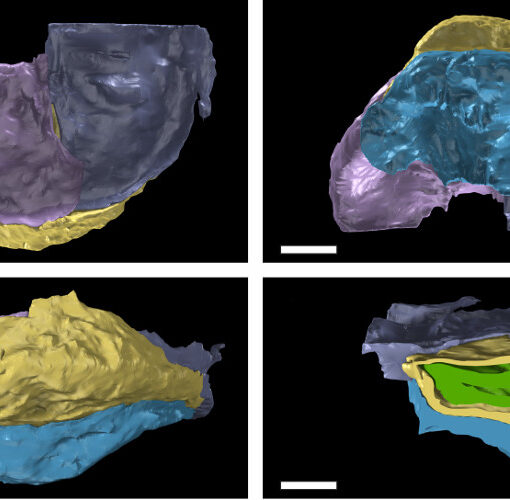Type
Presentation
Event
PalAss Annual Meeting
Authors
Spencer ART, Hilton J, Suttton MD
Date
2011
Abstract
Plants fossilised within siderite nodules (FeCO3) are often three-dimensionally preserved – such as those from the Mazon Creek Carboniferous terrestrial lagerstätte. Fossils preserved in this way have historically been studied using single-surface observation or destructive investigative methods such as serial peeling/grinding, and thin-sections. These approaches have gradually improved for over a century, but recent advances in scanning technology, matched by rises in computational power and advances in software, have opened a new and exciting set of tools for palaeobotanists. Here we report a case study of a Medullosan ovule in which a novel combination of X-Ray Micro-Tomography (XMT) and orientated precision-sectioning is used, the latter targeted using the former. This technique has allowed correlation of geometries of different layers (seen in the three-dimensional model) with histological characteristics (gathered from wafered sections). The study reveals the ovule to be unusual in displaying both radial and bilateral symmetries in different tissues and in anatomically separate parts of the seed. These previously unrecognised complexities have implications for attempts to infer systematic affinities from symmetry in fossil seeds.
Download (.pdf): PalAss 2011 Presentation

















